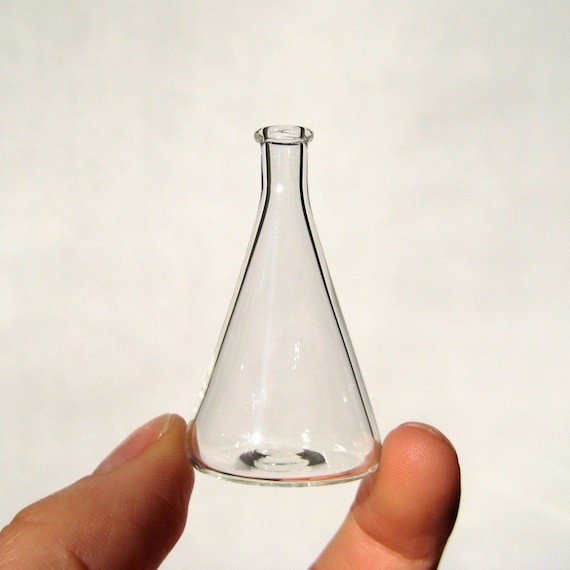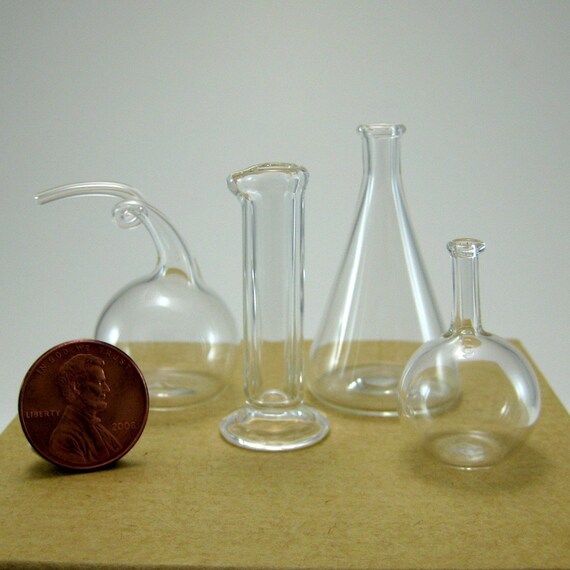
Monday, December 27, 2010
Smallest Periodic Table Written on a Hair
 Scientists at The University of Nottingham have written what they believe is the world's smallest periodic table -- on the side of a human hair. The table is so small that a million of them could be replicated on a typical post-it note.
Scientists at The University of Nottingham have written what they believe is the world's smallest periodic table -- on the side of a human hair. The table is so small that a million of them could be replicated on a typical post-it note.Researchers at the University of Nottingham created a special birthday present for Martyn Poliakoff, a professor of chemistry. It’s a periodic table of the elments inscribed on the surface of a hair from Poliakoff:
Professor Poliakoff said: “Although the application was lighthearted I felt that it enabled us to show people how such nano writing is done. Our microscopist, Dr Mike Fay, made the whole operation seem so simple and really demystified it in a most appealing way.”
Read more and watch videos here.
Fly Geyser
 This is a geothermal geyser found in Nevada, which originally started when the landowners were drilling for the water.
This is a geothermal geyser found in Nevada, which originally started when the landowners were drilling for the water.The water from the geyser is thrust skywards on a continual basis. The spouts of water squirt out two meters in the air, spraying the surrounding thirty or more pools with a fresh source of water. The different mix of minerals (which includes sulphur) reacting with the oxygen in the air help to give the geyser its glorious colors.
The multiple spouts mean that a single cone of enormous size has not been able to develop. Yet the alien looking mound is something quite extraordinary, especially with its myriad of colors. The other factor in the strange coloration of the mound is the fact that it is covered with thermophilic algae which as a heat tolerant microorganism thrives in this sort of hot environment.
See more pictures of the geyser and read more here.
World's Biggest Cave

 National Geographic presents The World’s Biggest Cave, a TV special that gives us a close-up look at Son Doong, a huge recently-discovered underground labyrinth in Vietnam.
National Geographic presents The World’s Biggest Cave, a TV special that gives us a close-up look at Son Doong, a huge recently-discovered underground labyrinth in Vietnam.A half-mile block of 40-story buildings could fit inside this lit stretch of Hang Son Doong, which may be the world’s biggest subterranean passage.
Wednesday, December 15, 2010
Rockets of the World
 This is an illustration from physics professor Peter Alway's 1995 book Rockets of the World.
This is an illustration from physics professor Peter Alway's 1995 book Rockets of the World.Click on the picture to zoom or download the full 3,322×5,079 image here. It's quite amazing what a monster the Saturn V still is, almost 40 years in retirement. The "Black Brants" are the Canadian rockets. They are all in the first two rows.
Personal Energy Footprint

National Geographic has a calculator for a personal energy footprint. It is also possible to compare your footprint with averages across the United States. Calculate your own here: http://environment.nationalgeographic.com/environment/energy/great-energy-challenge/personal-energy-meter/
The picture above shows a "Greendex" image of the globe shows the results of the third annual National Geographic/GlobeScan "Consumer Greendex," a scientifically derived sustainable consumption index of actual consumer behavior and material lifestyles across 17 countries. Read more: http://environment.nationalgeographic.com/environment/greendex/
Monday, December 13, 2010
Photography of Stars

A colorful, craggy column of dust and gas dubbed the Mystic Mountain stars in a picture from the Hubble Space Telescope.
Hot, young stars in the nebula are constantly emitting radiation and charged particles that sculpt the cosmic cloud from the inside. Columns like this one are regions of matter dense enough to stand up to stellar erosion.
The hourglass shape of the supernova remnant SN 1987A isn't as well balanced as thought, according to an August picture of the exploded star.
Using data from an observatory in Chilea astronomers were able to confirm that, when massive stars explode, some of the ejected material gets shot into space faster than other debris, as predicted by computer models.
See more Photography from Space at National Geographic.
How It's Made: Crayons!
Cool video on how crayons are made. The factory in the video can produce 30,000 crayons an hour.
Make Contest: Robotic Plant

MAKE Magazine and blog have a contest closing just before Christmas. For this project, they'll build a robotic plant seedling that will use its microcontroller brain to monitor its environment, and bloom when the time is right. The whole project will be housed in an ordinary plant pot, and thanks to an energy-efficient design, should be able to lie dormant for months, even years, on a single set of AA batteries. That means you could set it by your window and be delighted when it finally wakes up, or give it as a gift to a patient robot enthusiast for safekeeping.
You can check out the website http://makezine.com/makeitlast/ to find out more and to see the winners. You can also see if any projects come up that you would like to try out!
DNA Portrait
 Your very own DNA blown-up and in living color. How much more personal could this portrait get?
Your very own DNA blown-up and in living color. How much more personal could this portrait get?You can actually buy your own here: https://www.dna11.com/estore/
How-To: Simple Motor

This is a simple step-by-step guide on how to make a simple motor at home.
Materials:
- Toothpick
- 18" of motor wrap wire, around 22 AWG
- AA battery
- Masking Tape
- Flat piece of wood or cardboard
I bet this would spin well and you don't have the problems with the brushes touching the commutator that we had in the lab!

Thursday, November 25, 2010
Chem 20 - Qualitative Analysis
Here is an academic research article on pesticides in drinking water in Alberta.
A short description of liquid chromatography can be found here and another for atomic absorption spectroscopy can be found here.
Tuesday, November 23, 2010
Thursday, November 18, 2010
New Website Tracks Local Pollutions

Read more: http://www.edmontonjournal.com/Website+tracks+local+pollution+levels/3811349/story.html#ixzz15gxpsHXb
Earthquake warps train tracks
 An earthquake in New Zealand caused this deformation of the train tracks.
An earthquake in New Zealand caused this deformation of the train tracks.Dave Petley, blogging at the American Geophysical Union, isn't exactly sure what caused the strange deformations, but speculates that "The compression on the very strong railway line was accommodated when a weak point was found, leading to a comparatively rapid deformation to form the main buckle on the left. This then concentrated stress on both sides of the buckle, allowing the other (right side) bends to form."
Eco-City 2020: Domed City Planned for Siberia

A Russian company has unveiled plans to build a gigantic domed city in an abandoned diamond mine in Siberia.
The city, named Eco-city 2020, would be constructed inside the Mir diamond mine, the second largest excavated hole on the planet. It's a quarter-mile wide at the top and over 1,700 feet deep, which is so big that air flowing into the hole can actually suck helicopters out of the sky. If the project gets going, the mine would be completely covered over with a glass dome to protect the city from the weather in Siberia (which is apparently lousy almost all the time), and solar cells embedded in the dome would provide power for the entire structure.
Eco-city would be constructed of multiple levels, with a huge central core. The main floor would hold parks and recreation areas, with residential areas terracing up around the walls of the mine. Underneath would be space for vertical farms and forests, subsiding on light piped down the central core. An estimated 100,000 people would be able to live in Eco-city, and architects are hoping that it would help to attract tourists to Eastern Siberia. Um, good luck with that.
More pictures.Tuesday, November 9, 2010
Mixing and Unmixing Colours in Fluids
Sunday, November 7, 2010
Science 10 Physics Engine Technology Links
Some links to see pictures and animations of these early machines. More information is provided in your textbooks.
Engines from the first chart:
Gunpowder:
http://science.howstuffworks.com/revolver1.htm
Heat Engine:
http://www.animatedengines.com/vstirling.shtml
Savery Pump Engine:
http://library.thinkquest.org/C006011/english/jsites/steam_thomas_savery.php3?v=2
Newcomen Engine:
http://library.thinkquest.org/C006011/english/jsites/steam_thomas_newcomen.php3?v=2
Watt:
http://library.thinkquest.org/C006011/english/sites/steam_james_watt.php3?f=2&b=50&j=1&fl=1&v=2
Internal Combustion Engine:
http://www.howstuffworks.com/engine1.htm
Otto Engine:
http://www.animatedengines.com/otto.shtml
Machines from the second chart:
Hero Steam Engine
http://library.thinkquest.org/C006011/english/sites/steam_first_experiments.php3?v=2
Archimedes Screw
http://www.es.flinders.edu.au/~mattom/science+society/lectures/illustrations/lecture10/screw.html
Persian Water Wheel
http://beaversmill.ieasysite.com/water_wheel_004.htm
Reciprocating Pump
http://www.rpi.edu/dept/chem-eng/Biotech-Environ/PUMPS/reciprocating.html
Science 10 Physics - Terms to Know!
The following are scientists that are important to know. Look up each scientist and state their largest contribution to energy or thermodynamics.
Joule
Lavoisier
Volta
Becquerel
Edison
Oersted
Black
Leibniz
It is important for you to be able to differentiate between these forms of energy. State the definition of each:
Solar Energy
Kinetic Energy
Chemical Energy
Electrical Energy
Mechanical Energy
Nuclear Energy
Potential Energy
HeatThursday, November 4, 2010
Mini Chem Glassware
Sinking Boat but Actually Seaworthy


Julien Berthier is an artist, who created this sculpture that is actually seaworthy. He toured around Europe in his boat. His website is:http://www.julienberthier.org/Love-love.html
Tuesday, November 2, 2010
Every Drop Counts!

Calculate your water footprint.
http://environment.nationalgeographic.com/environment/freshwater/water-footprint-calculator/
What may come as a surprise is that very little of that—only five percent—runs through toilets, taps, and garden hoses at home. Nearly 95 percent of your water footprint is hidden in the food you eat, energy you use, products you buy, and services you rely on.
What can you do to conserve water?
- If you’re in the market for a toilet, buy a low-volume, ultra low-volume, or dual-flush model.
- Fix leaky faucets. All those wasted drops add up—sometimes to 10-25 gallons a day.
- Run your dishwasher and washing machine only when full. When it’s time to replace them, buy a water- and energy-efficient model. Remember, saving water saves energy, and saving energy saves water.
- Buy less stuff. Everything takes water to make. So if we buy less, we shrink our water footprint.
- Recycle plastics, glass, metals, and paper. Buy re-usable products rather than throw-aways, as it takes water to make most everything.
- Turn off the tap while brushing your teeth and washing the dishes. Shave a minute or two off your shower time. Millions of people doing even the little things makes a difference.
- Know the source of your drinking water—the river, lake, or aquifer that supplies your home. Once you know it, you’ll care about it. You just won’t want to waste water.
Monday, November 1, 2010
Science 10 Physics Generator Links
How a hydroelectric generator works:
http://science.howstuffworks.com/environmental/energy/hydropower-plant1.htm
http://ga.water.usgs.gov/edu/hyhowworks.html
How a coal-burning power station works:
http://www.energyfutures.qld.gov.au/how_a_coal_fired_power_station_works.cfm
http://www.hk-phy.org/energy/power/elect_phy/flash/powerplant_icon1.swf
How a nuclear power station works:
http://a-agung.staff.ugm.ac.id/wp-content/nuctour1.swf
http://science.howstuffworks.com/nuclear-power3.htm
How a solar cell works:
http://www.odec.ca/projects/2006/wong6j2/solarAnimation.html
http://simeonintl.com/files/A_flash_demo_how_solar_panel_works.swf
Colour Chemistry Crayons

These crayons are labeled with the names of the chemical compounds that produce the colour. Genius!
http://blog.makezine.com/archive/2010/08/color_chemistry_crayons.html
The Elements - As Seen By the Internet
Unpopular Science - Human Life is Subject to the Universal Laws of Physics
 This explains why an empty refrigerator administrates a much smaller gravitational pull than, say, one thatʼs stacked with 50 pounds of delicious leftovers. Great: that means we can blame the leftovers.
This explains why an empty refrigerator administrates a much smaller gravitational pull than, say, one thatʼs stacked with 50 pounds of delicious leftovers. Great: that means we can blame the leftovers.Check out other pics and examples of physics in everyday life:
http://niemann.blogs.nytimes.com/2010/10/25/unpopular-science/















